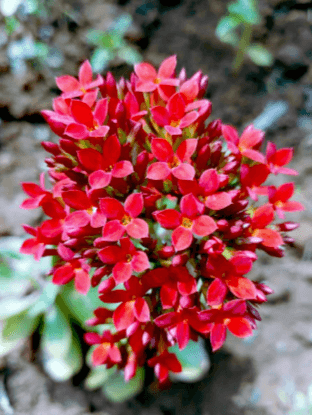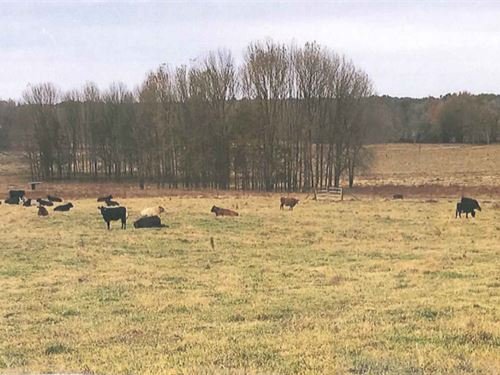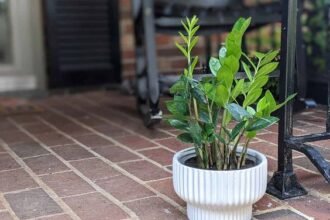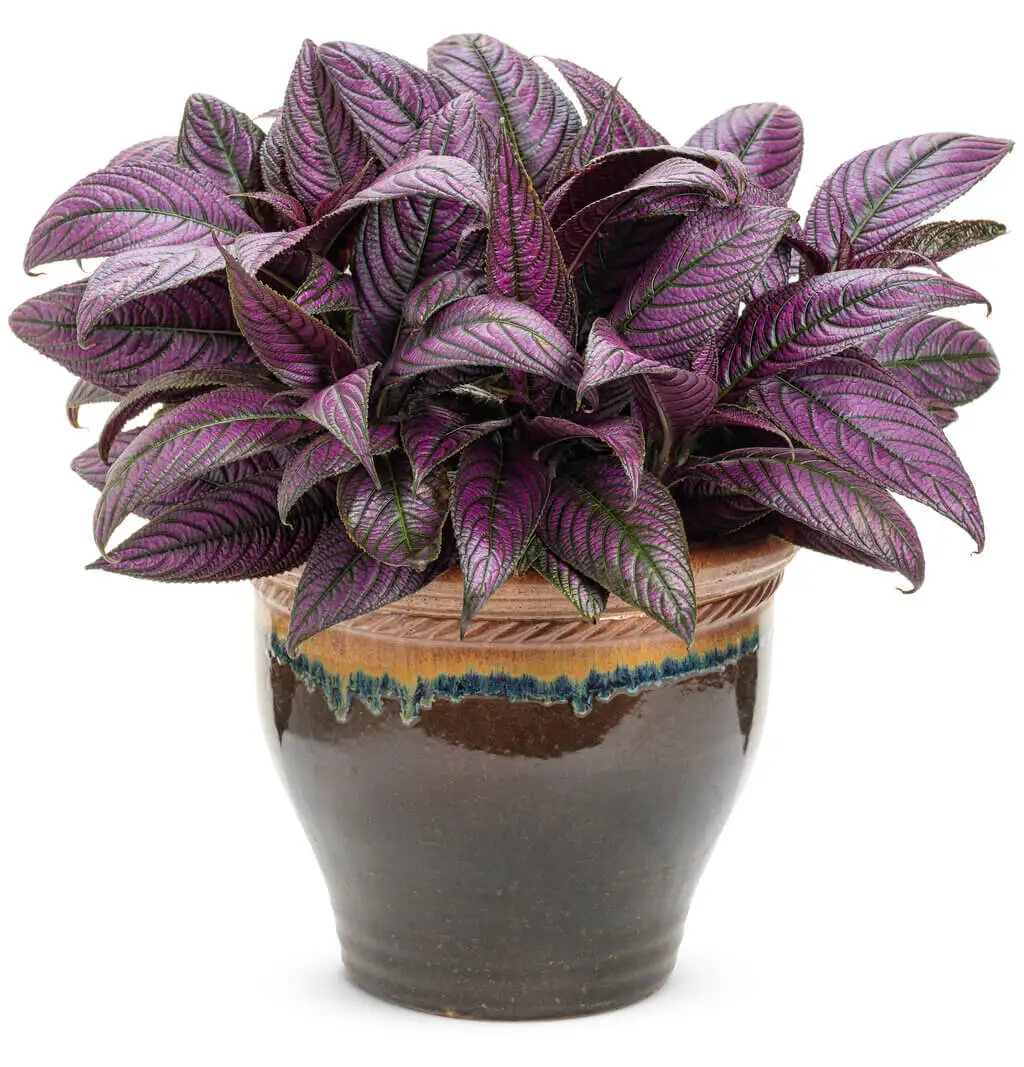The kalanchoe plant, a succulent, is often used as a decorative plant both indoors and out. It’s no surprise that these plants are a favorite among gardeners: they bloom beautifully and have distinctive leaves. According to the National Gardening Association, Kalanchoe plants and other succulents were among the top 10 most popular varieties of gardening material purchased in the United States in 2021.
Kalanchoe plants are ideal for both inexperienced and seasoned gardeners due to their low maintenance requirements. How to cultivate and maintain these beautiful plants is the subject of this article.
Growing Kalanchoe Plants

A. Choosing the Right Location
The flowers and leaves of the kalanchoe plant are what make it such a desirable houseplant and garden specimen. Yet, it is crucial to select an appropriate growing environment to ensure the success of these plants. The considerations listed below should be taken into account when deciding where to put your Kalanchoe plants.
1. Optimal Light Conditions
Bright, indirect light is ideal for the growth and flowering of kalanchoe plants. Place them where they will get at least six hours of daily exposure to bright, filtered sunshine. The leaves of a plant can be damaged by prolonged exposure to direct sunlight.
Kalanchoe plants thrive in east- or west-facing windows, where they receive indirect light but still get enough sunlight to thrive.
2. Temperature Requirements
Temperatures between 60 and 85 degrees Fahrenheit (15 and 29 degrees Celsius) are ideal for kalanchoe plants. Because of their sensitivity to temperature changes, they should be kept away from sources of drafts, AC vents, and heaters. Make sure the plant is not subjected to drafts or temperatures below 40 degrees Fahrenheit (4 degrees Celsius), since this can be lethal.
3. Humidity Needs
Although they may survive in low humidity, kalanchoe plants thrive in moderate to high humidity. They thrive in average humidity levels or can be given a boost by being placed on a tray of stones submerged in water. Kalanchoe plants are susceptible to fungal diseases, so it’s best to keep them out of damp environments.
B. Soil Requirements and Potting Mix
Soil that drains properly and still retains moisture and nutrients is ideal for kalanchoe plants. To help you choose the best soil and potting mix for your Kalanchoe plants, we’ve compiled some guidelines.
1. Ideal Soil pH Level
Soil with a pH between 6.0 and 6.5 is ideal for kalanchoe plants. The plant can get all the nutrients it needs to grow and flourish from the soil within this range. A plant may have nutritional deficits and other issues if the soil pH is excessively alkaline or too acidic.
2. Potting Mix Ingredients
Kalanchoe plants require a potting mix high in organic matter that drains effectively. Equal quantities of perlite, peat moss, and vermiculite make up a standard Kalanchoe potting mix. Sand, coconut coir, or bark can be added to the mixture as well to boost drainage and aeration.
3. Soil Drainage Requirements
Kalanchoe plants require well-drained soil because they are sensitive to root rot in soggy conditions. The ideal potting soil will drain excess water quickly while still maintaining enough moisture for plant development.
Make sure the bottom of the container has drainage holes, and add a layer of gravel or sand before adding the potting mix to promote proper drainage.
C. Watering Frequency and Techniques
Overwatering can cause root rot and other issues, so it’s important to water Kalanchoe plants properly to ensure their health and growth. Here are some things to keep in mind as you experiment with different watering schedules and methods for your Kalanchoe plants.
1. Overwatering Risks and Prevention
Root rot and other illnesses are common outcomes of overwatering Kalanchoe plants. Overwatering can be avoided by using a well-draining potting mix and a container with drainage holes. Before giving the plant any more water, make sure the top inch or two of the soil is completely dry.
2. Watering Schedule
The size of the pot, the potting mix, the ambient temperature, and the humidity all play a role in how often you should water your Kalanchoe plant. Water Kalanchoe plants every 7-10 days when they’re actively developing, and less often when they’re dormant.
3. Watering Methods
Kalanchoe plants can be watered in a number of ways, including from the bottom or the top. Bottom watering is setting the container in a saucer of water and allowing the liquid to seep up through the bottom of the container.
This technique is helpful for maintaining a consistent soil moisture level and avoiding overwatering. When top-watering, water is poured directly onto the soil and allowed to drain through the pot’s drainage holes. This technique is helpful for removing built-up salts and fertilizer from the soil.
D. Fertilizing Tips
Regular fertilizing is helpful for the growth and blooming of kalanchoe plants. Here are some things to keep in mind while choosing and applying fertilizer to your Kalanchoe plants.
1. Fertilizer Type and Composition
A balanced fertilizer with adequate proportions of nitrogen, phosphate, and potassium is essential for healthy kalanchoe plant growth (NPK). Most Kalanchoe plants do well when fertilized with a 10-10-10 all-purpose houseplant fertilizer. To hasten to flower, you might also use a high-phosphorus fertilizer (such as 15-30-15).
2. Fertilizing Frequency
Fertilizing kalanchoe plants every 2 weeks or so is recommended (spring and summer). Fertilizing should be cut back or halted entirely during the dormant season (autumn and winter). Nutrient burn can be caused by overfertilization, therefore avoid doing it more often than instructed.
3. Fertilizer Application Techniques
Kalanchoe plants can be fertilized in a number of ways, including:
- Top Dressing: Fertilizer should be sprinkled on top of the potting mix and evenly distributed around the plant. When fertilizer has been applied, the plant should be fully soaked.
- Foliar Feeding: Water down the fertilizer and spray it on the plant’s leaves. If done sparingly and only when the plant is actively growing, this technique can be helpful for giving nutrients to the plant quickly.
- Watering: Water the plant as usual, but before you do, dissolve the fertilizer in the water. This technique has the potential to efficiently disperse the fertilizer throughout the potting soil.
For optimal results, apply the recommended amount of fertilizer by following the directions on the package. It is vital not to overfertilize because doing so might lead to nutrient burn and other issues.
E. Propagation Methods
Propagating kalanchoe plants can be done in a number of different ways, all of which are straightforward. The three most typical means of spreading Kalanchoes are as follows:
1. Stem Cutting Propagation
The quickest and most usual way to propagate Kalanchoe plants is through stem cutting. Here’s how to make a new Kalanchoe plant from a cutting:
- Choose a strong stem that’s loaded with leaves.
- Just below a node, prune the stem using clean, sharp scissors or pruning shears (the point where a leaf is attached to the stem).
- Take off the lower leaves and just leave the upper ones on the stalk.
- Plant the stem in a pot with a well-draining potting mix after dipping the cut end in rooting hormone (optional).
- Make sure the plant has plenty of water and is kept in indirect sunlight.
- The soil should be kept damp, but not soggy.
- After a couple of weeks, fresh growth should emerge from the top of the stem and roots should have formed at the base of the stem.
2. Leaf Cutting Propagation
The Kalanchoe plant can also be propagated through leaf cutting. In order to start a new Kalanchoe plant from a leaf cutting, you should:
- To remove a good leaf from its stalk, simply twist it gently.
- The cut end of the leaf will get calloused once it has dried for a few hours.
- Rooting hormone (not required) is dipped onto the cut end of the leaf before it is planted in a pot of well-draining potting mix.
- Make sure the plant has plenty of water and is kept in indirect sunlight.
- The soil should be kept damp, but not soggy.
- New growth should emerge from the base of the leaf after a few weeks, and roots will have formed.
3. Division Propagation
When it comes to propagating Kalanchoe plants, larger plants with several stems or a large root ball respond well to division propagation. Here’s how to divide a Kalanchoe plant and start a new plant:
- Carefully shake off any extra soil after removing the plant from its pot.
- Make sure each stem or part of the root ball has roots and a stem before separating it.
- Put each piece into a pot with potting soil that drains well.
- Give the plants some water and put them somewhere with indirect sunlight.
- The soil should be kept damp, but not soggy.
- The young plants should begin to sprout after a few weeks.
Kalanchoe Plant Care
A. Pruning and Grooming
Maintaining a Kalanchoe plant in good health and appearance requires regular pruning and trimming. Here are some suggestions for trimming and shaping your Kalanchoe:
1. Removing Spent Blooms
As Kalanchoe plants produce so many flowers, it’s essential to prune off the faded blooms as soon as possible. The plant’s aesthetics will improve and it will bloom more frequently as a result. Pinch or snip off the faded blossoms with a clean pair of scissors or pruning shears to get rid of them.
2. Shaping the plant
With time, a kalanchoe plant’s growth may become bushy and untidy. Shaping your plant by removing some of the outer leaves might help it maintain a neat and orderly appearance. To promote new growth and business, cut down any long, straggly stems. Pinch the stems at their tips to promote branching.
3. Controlling Plant Size
If you don’t cut back your kalanchoe plants, they can get rather tall. You can keep the plant at a manageable size by cutting it back once or twice annually. Kalanchoe plants are best pruned in early spring before they begin their active growth phase. Cut down excessive branches to the appropriate length and remove any stems that are diseased or dying.
B. Pest and Disease Control
1. Common Pests and Diseases Affecting Kalanchoe Plants
Although kalanchoe plants are somewhat pest and disease resistant, they are nonetheless susceptible to attack just like any other houseplant. Here are some of the most frequent pests and illnesses that can strike Kalanchoe plants, as well as some preventative and curative measures:
Common Pests:
- Mealybugs: The axil of leaves and the undersides of leaves are common places to find these tiny, white, cotton-like insects. The growth of plants can be stunted, and the leaves can turn yellow and fall off. Insecticidal soap or rubbing alcohol on a cotton swab can be used to physically remove mealybugs.
- Spider mites: These small insects, which resemble spiders, can cause the plant’s leaves to turn yellow and produce a thin web. Both insecticidal soap and horticultural oil can be used to eliminate spider mites.
- Scale insects: Yellowing and slowed development of the plant can be caused by these tiny, brown, oval-shaped insects. Use rubbing alcohol or insecticidal soap to get rid of scale insects.
Common Diseases:
- Root rot: Overwatering and a lack of proper drainage are frequent culprits in the demise of Kalanchoe plants. Root rot can be avoided by using soil that drains effectively and without watering the plant too frequently.
- Powdery mildew: Kalanchoe plants frequently die due to overwatering and poor drainage. Using well-drained soil and limiting the plant’s exposure to water can help prevent root rot.
2. Prevention and Treatment
Kalanchoe plants are susceptible to pests and diseases, but with the right attention and care, you can keep such issues at bay. They need bright, indirect light, soil with good drainage, and frequent yet infrequent watering. Overfertilizing the plant might invite unwanted pests and illnesses.
It’s crucial to take prompt action upon discovering pests or illnesses on your Kalanchoe plant. Insecticidal soap and horticultural oil are two examples of all-natural pest control treatments you can use.
If the plant is infected, you can either remove the diseased leaves or apply a fungicide. If you give your Kalanchoe plant the attention and care it needs, you can keep it free of pests and diseases and keep it flourishing.
C. Repotting and Transplanting
When caring for a Kalanchoe, it is vital to repot or transfer the plant so that it has room to expand. When and how often you should repot or transplant your Kalanchoe plant is discussed.
1. Signs That a Plant Needs Repotting
- Roots growing out of the drainage holes: The plant has clearly outgrown its container at this point.
- Stunted growth: If your kalanchoe plant isn’t flourishing like it used to, maybe it’s time to upgrade its digs.
- Waterlogged soil: If the soil in the pot remains damp after watering, it may be time to repot the plant.
2. Repotting Techniques
- Choose a new pot that’s a size up from the old one, and make sure it has holes in the bottom for drainage.
- Put some potting soil with good drainage in the bottom of the new pot.
- Carefully unpot the Kalanchoe plant, making sure not to disturb the roots.
- Remove any clumped roots and pull out any rotten or diseased ones.
- Transplant the plant to the new container and fill in any holes with potting soil.
- Let the earth settle after giving the plant a good soaking.
3. Transplanting Requirements
There are a few things to take in mind while relocating your Kalanchoe plant, whether it be from an indoor pot to an outdoor garden or from a small pot to a bigger one:
- Choose a spot that gets plenty of light and has soil that drains properly.
- Make sure the hole you dig is just a little bit bigger than the plant’s root ball.
- Carefully remove the plant from its current container without uprooting it.
- Backfill the hole around the plant with new soil.
- You should water the plant well, and keep doing so on a regular basis until it has been rooted in its new place.
D. Winter Care and Dormancy
When the temperature goes below 50 degrees Fahrenheit (10 degrees Celsius), kalanchoe plants may enter a dormant period for the winter. It’s possible that the plant’s growth will slow or cease during this time, at which point it will need less care overall. If you have a Kalanchoe plant, here are some things to keep in mind when it hibernates for the winter:
1. Winter Dormancy Conditions
- Temperature: Kalanchoe plants are sensitive to cold and will perish if exposed to it. Make sure the plant is kept in a toasty spot with no drafts.
- Light: If you leave your kalanchoe plant outside in the cold, it will die. The plant has to be kept in a warm, draft-free area.
- Water: Kalanchoe plants need less water in the winter than they do in the summer. When the top inch of soil is dry to the touch, that’s when you should water the plant.
- Fertilizer: In the winter, kalanchoe plants can go longer without water. Water the plant when the top inch of soil feels dry to the touch.
2. Winter Watering and Fertilizing Needs
- Watering: You should water your Kalanchoe plant less frequently during the winter months. Root rot and other issues can be caused by overwatering at this time. When the top inch of soil is dry to the touch, that’s when you should water the plant.
- Fertilizing: During the colder months, kalanchoe plants can do without fertilizer. Fertilizing during this time could potentially harm the plant because it would stimulate excessive growth.
3. Tips for Promoting Plant Growth During Dormancy
- Provide additional light: It may be necessary to use a grow light to supplement the light your Kalanchoe receives during the winter months.
- Avoid overwatering: In the winter, overwatering can cause root rot and other issues. When the top inch of soil is dry to the touch, that’s when you should water the plant.
- Prune the plant: If you prune your Kalanchoe plant in the winter, it will emerge out of hibernation in the spring with healthy, new growth.
Common Kalanchoe Varieties
1. Popular Kalanchoe Species and Cultivars
There are more than 125 species of the succulent genus Kalanchoe. Some well-liked Kalanchoe species and cultivars are as follows:
- Kalanchoe blossfeldiana: The most widely cultivated kind of Kalanchoe, this plant is prized for its vibrant flowers. Little, multicolored flowers in pink, red, orange, yellow, and white form clusters on the plant. It can reach heights of 1 to 2 feet and has large, waxy leaves.
- Kalanchoe tomentosa: The fluffy, pliable leaves of this plant have earned it the widespread names panda plant and pussy ears. The grayish green leaves are tipped in a reddish crimson. In the summer, the plant blooms with tiny tubular flowers. It can reach a height of 1 to 2 feet.
- Kalanchoe thyrsiflora: The flat, paddle-shaped leaves of this plant have earned it the common names paddle plant and flapjacks. The grayish green foliage can change to crimson or golden when exposed to strong light. The plant’s maximum height is two to three feet, and in the summer it bears clusters of tiny, tubular flowers.
- Kalanchoe luciae: The flat, paddle-shaped leaves of this plant have earned it the widespread name “flapjack paddle plant.” The grayish-green leaves can change to a reddish or bronze hue when exposed to strong light. The plant’s maximum height is two to three feet, and in the summer it bears clusters of tiny, tubular flowers.
- Kalanchoe fedtschenkoi: Because of its scalloped leaves and its capacity to grow in the air, this species is often referred to as the lavender scallops or the South American air plant. The leaves are grayish green, with purple veining and tips. In the summer, the plant blooms with tiny tubular flowers. It can reach a height of 1 to 2 feet.
- Kalanchoe daigremontiana: The propensity of this species to develop plantlets along the edges of its leaves has earned it the name “mother of thousands.” The leaves have scalloped edges and a bluish-green tint. The plant’s maximum height is 3–4 feet, and in the summer it bears tiny tubular blooms.
2. Key Differences in Appearance and Care Requirements
The appearance and needs of Kalanchoe plants shift from species to species and cultivar to cultivar. These are a few notable distinctions:
- Flowering habits: The vibrant flowers of Kalanchoe species like Kalanchoe blossfeldiana make them popular houseplants. The flowers are short and tubular, and come in a variety of colors including pink, red, orange, yellow, and white. Little, tubular flowers are produced by other Kalanchoe species, such as Kalanchoe tomentosa, but these plants are not nearly as visually striking.
- Leaf shape and texture: There is a wide range of leaf forms and textures among kalanchoe species. In contrast to the flat, paddle-shaped leaves of the Kalanchoe thyrsiflora, which are a greenish-gray color and turn red or bronze in strong sunshine, the soft, fuzzy leaves of the Kalanchoe tomentosa are a grayish green tint with brownish-red ends.
- Growth patterns and size: There is a wide range of possible sizes and shapes for kalanchoe plants. Kalanchoe thyrsiflora and Kalanchoe luciae are two examples of plants that can reach heights of 2–3 feet and develop in a rosette shape. Certain species, like Kalanchoe daigremontiana, have a more erect growth habit and can reach heights of 3–4 feet.







